This recipe is designed for home bakers without a stand mixer, using just regular bread flour (even if it’s lower protein, around 10%). Many video creators never tell you what kind of flour they’re using—they only boast about their dough’s high hydration, like 100% hydration or similar. When you try such recipes with regular flour, it often leads to failure and a frustrating experience.Here, the hydration is set at a manageable 77%, making it straightforward and beginner-friendly. To help produce steam, a simple towel-steam method works beautifully
This recipe assumes a fermentation environment of 75°F (24°C). If the temperature in your kitchen is lower or higher, you’ll need to adjust the fermentation time accordingly—longer for cooler conditions, shorter for warmer ones. The fermentation time begins once the sourdough starter is incorporated into the dough. to compensate for home ovens.

Preparation time 9 Hours
Cooking Time 40 Min
Serves 2-4 (It’s a loaf 600g± Medium Bread)
Dietary vegan and vegetarian
Check our video tutorial— Bake this bread with Cumo!
Tools
- a Bowl
- a Towel
- a Fermentation basket
- Your Hands
Ingredients
- Bread Flour: 255g
- Whole Wheat Flour: 45g
- Water: 220g
- Sourdough Starter: 90g
- Salt: 7g
Instructions
Folding
Autolyse
Mix flours and water until no dry bits remain. Cover and rest for 1.5 hours at room temperature (~75°F). (Only add Water and Flour)
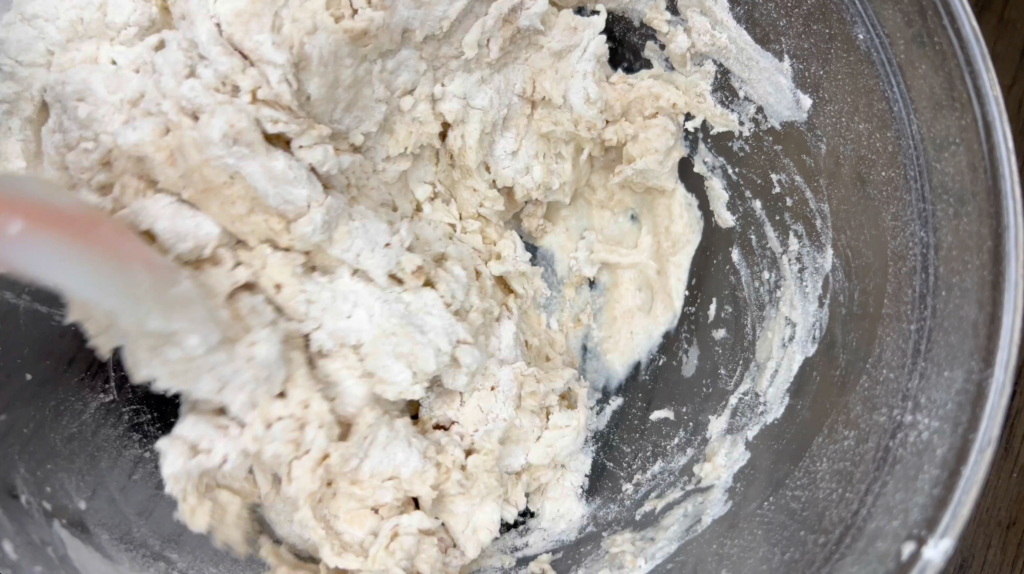
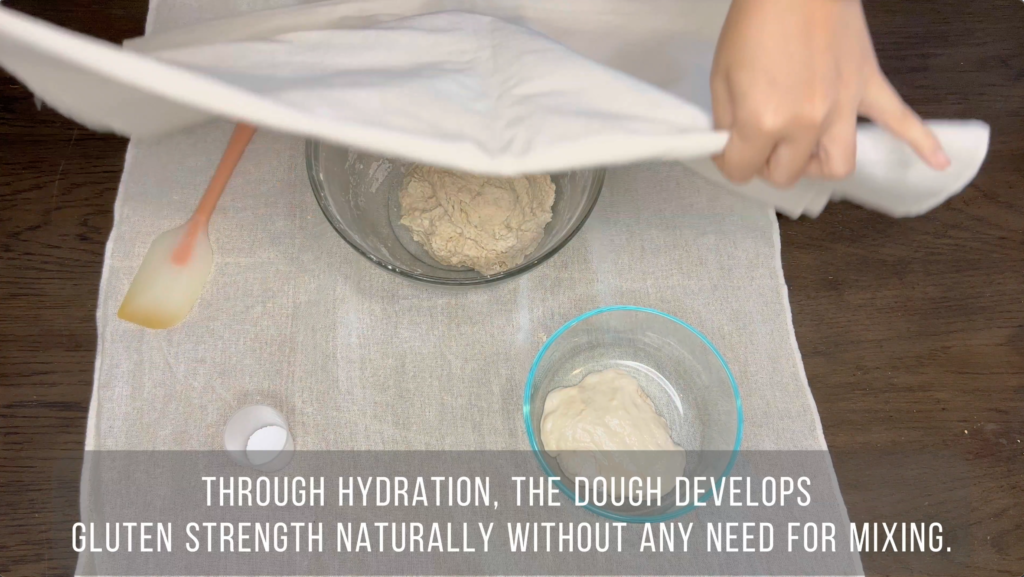
Add Starter & Salt
Gently knead in the sourdough starter and salt in small amounts until fully combined. Use a pinching technique to slowly incorporate the sourdough starter, salt, and dough together. After this, Transfer the dough to a bowl lightly coated with oil, and let it rest for 40 minutes.
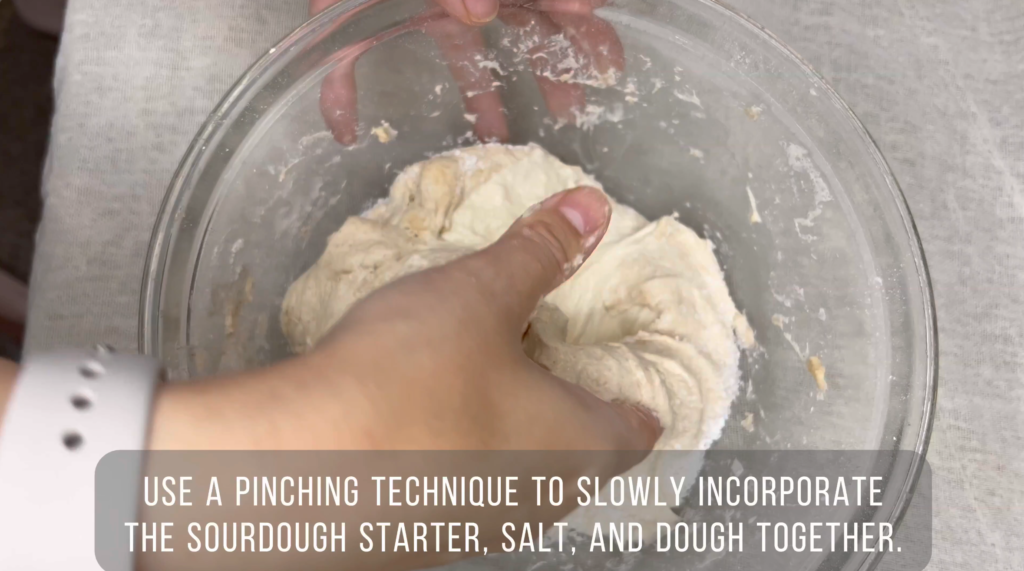
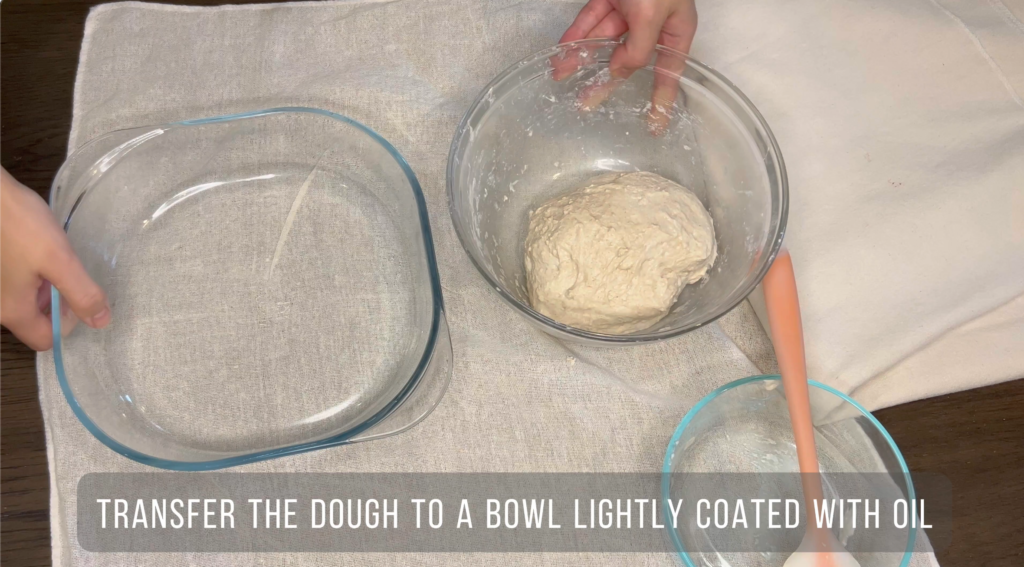
Stretch & Fold #1
Perform a gentle stretch and fold. Cover and rest for 30 minutes.(Check this blog to quickly learn the fold techniques)
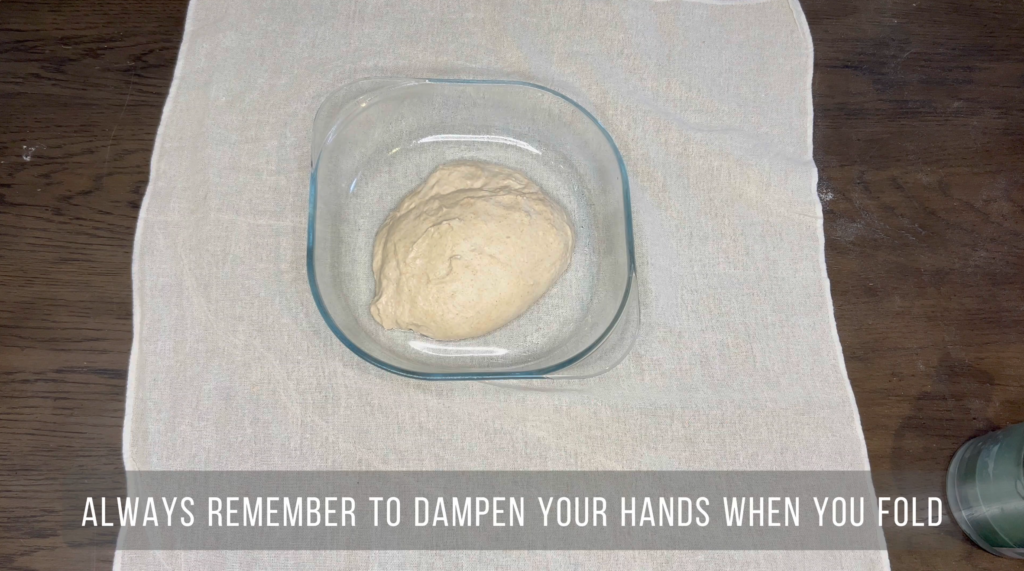
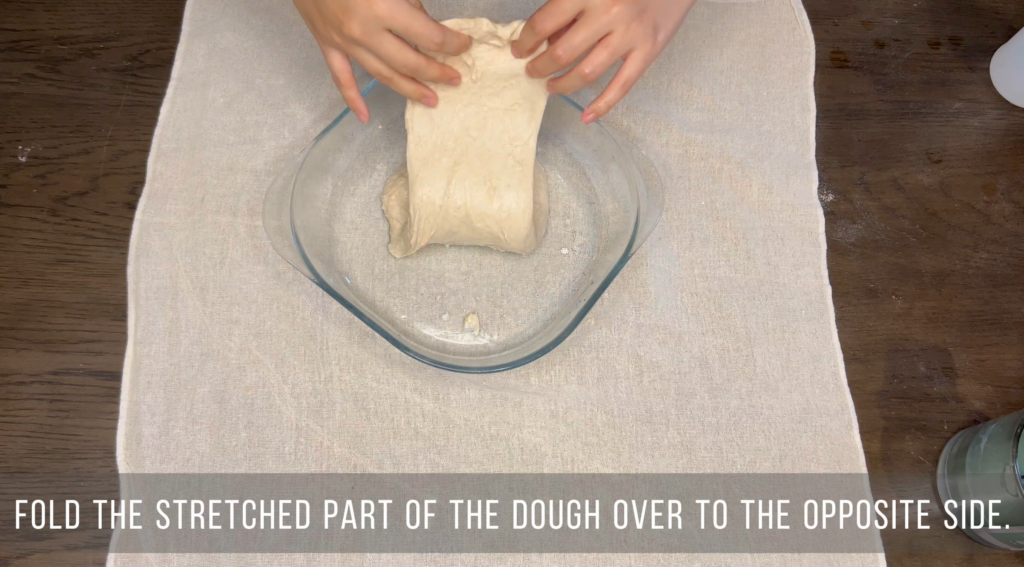
Stretch & Fold #2
Repeat the stretch and fold. Rest for another 40 minutes.(Check this blog to quickly learn the fold techniques)
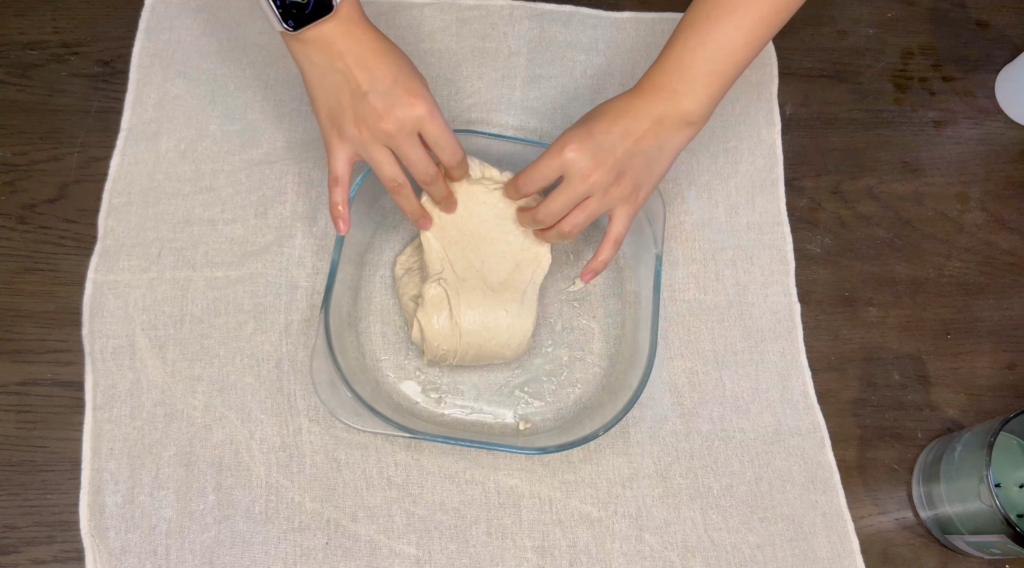
Bench Light Fold
Gently fold the dough and allow it to rest for 50min.(Check this blog to quickly learn the fold techniques)

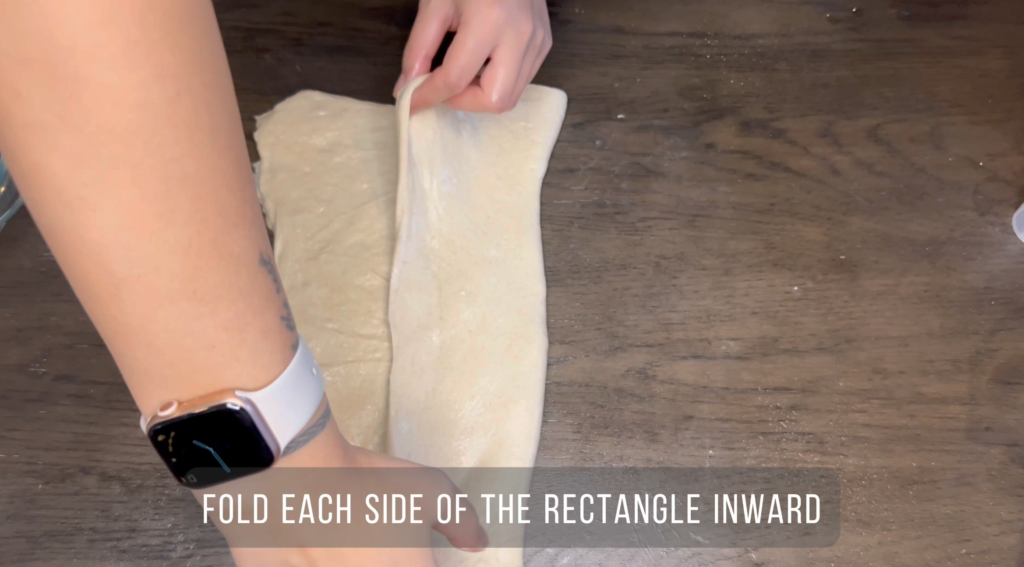
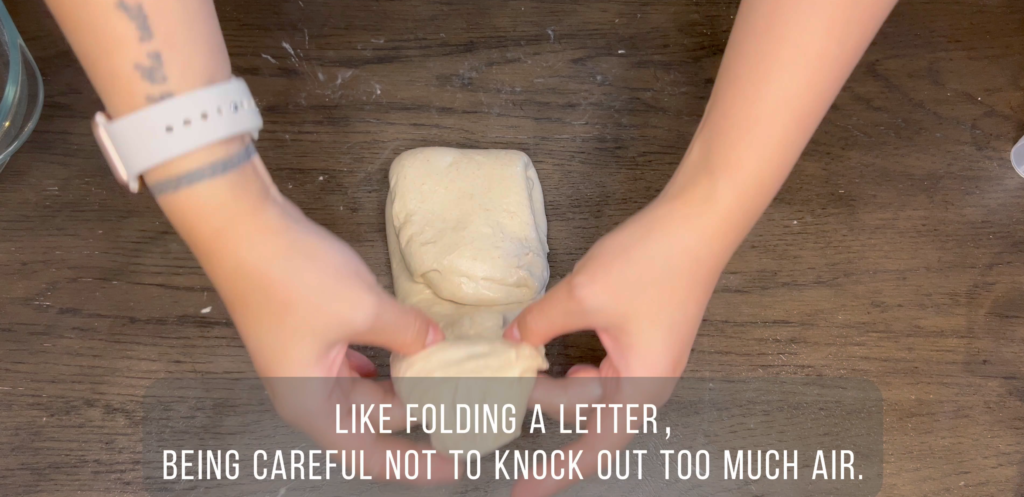
Lamination
Gently stretch the dough thinly (without tearing) on a flat surface, then fold it back up. Cover and rest for 80 minutes.(Check this blog to quickly learn the fold techniques)
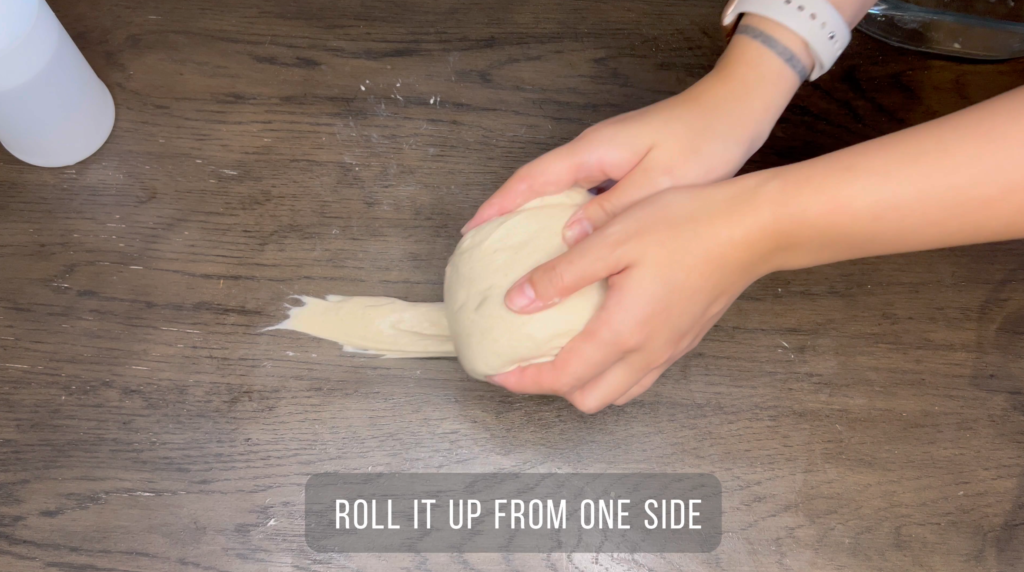
Coil Fold #1
Perform a gentle coil fold. Rest for 1 hour.
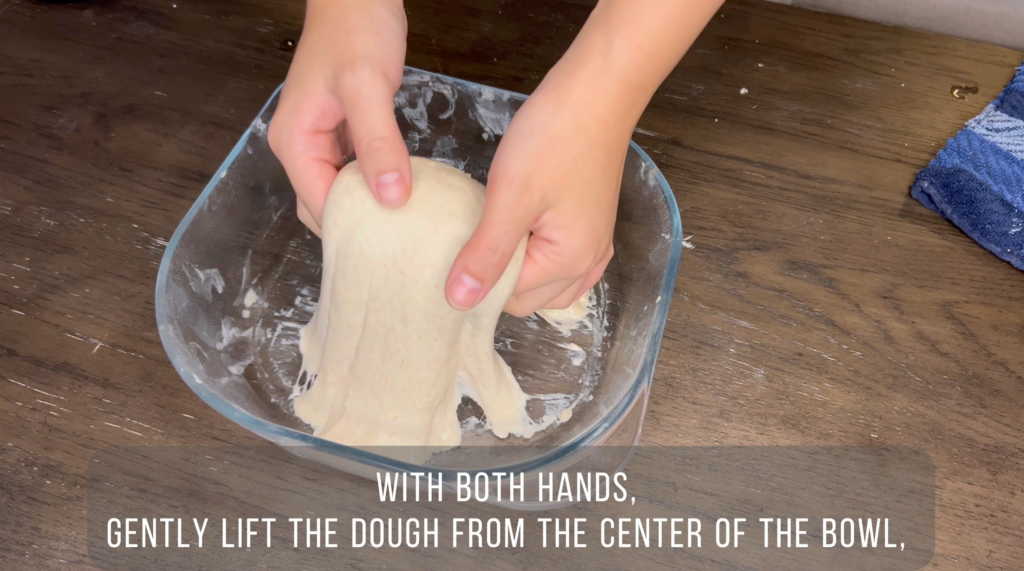
Coil Fold #2
Do another coil fold, rest for 1.5 hours, then shape the dough, place it in a proofing basket, and allow it to rise at room temperature (~75°F) for ~1.5 hour.
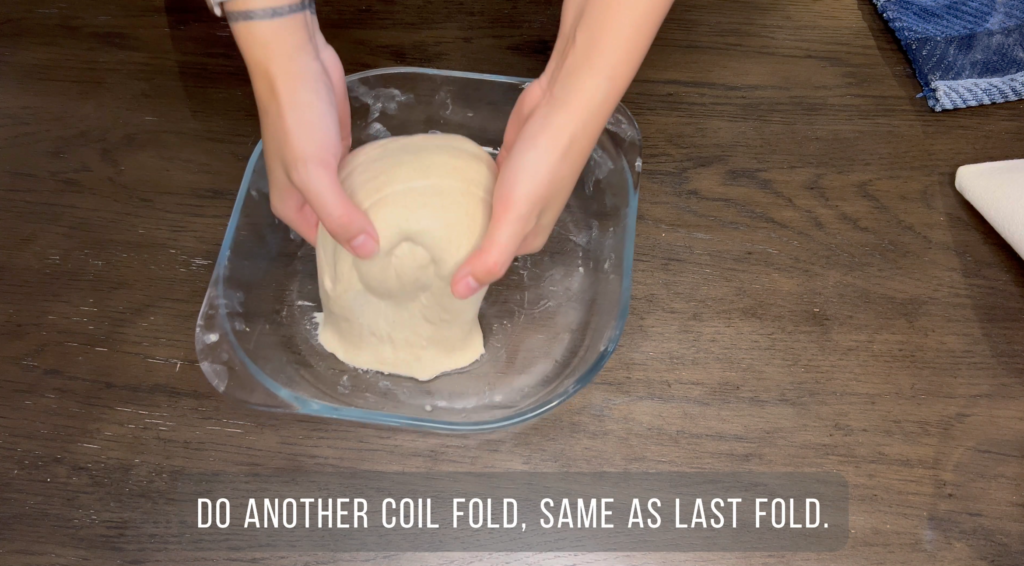
Shaping
shape the dough, place it in a proofing basket, and allow it to rise at room temperature (about 75°F) for around 1.5 hour.

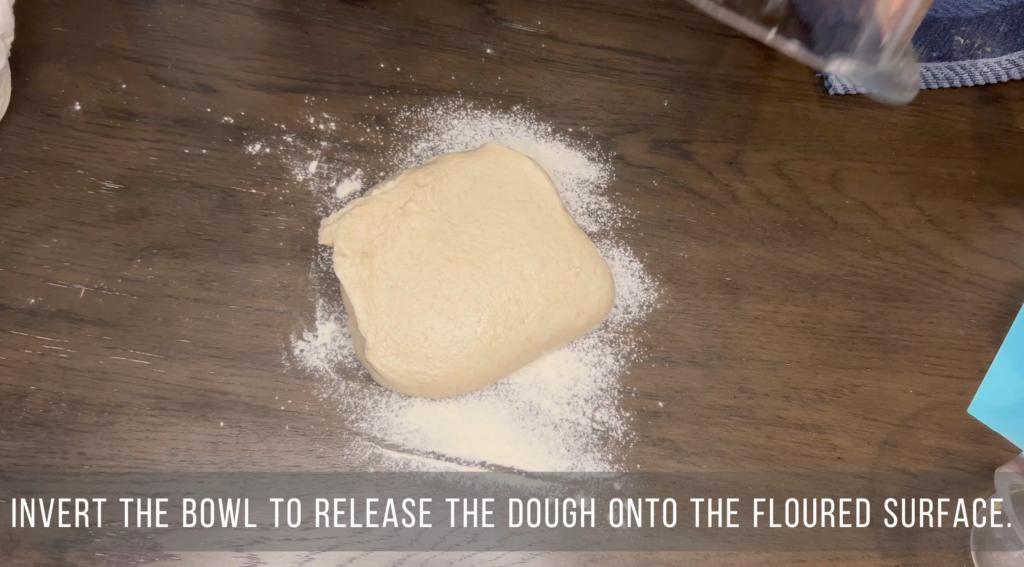
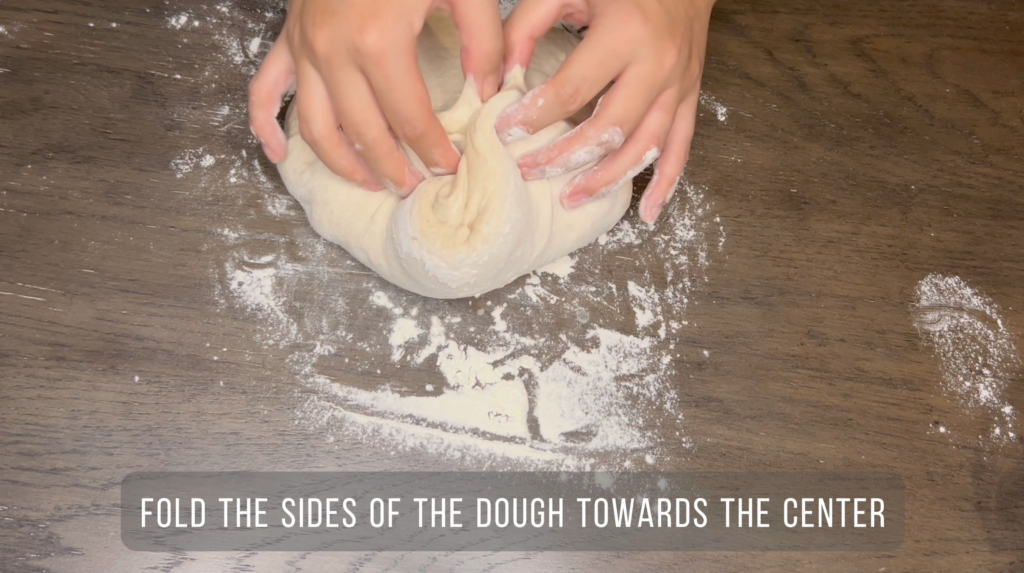
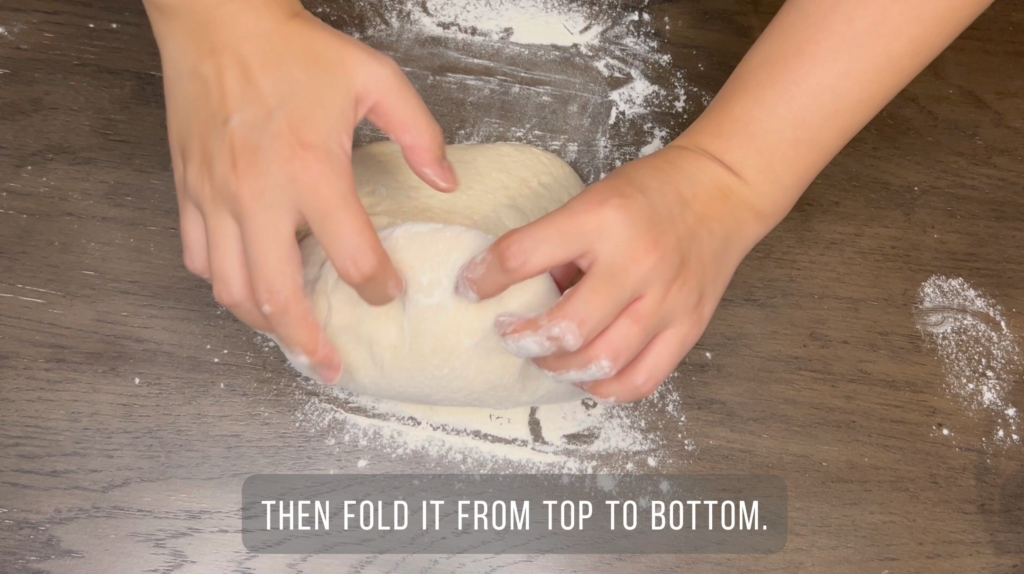
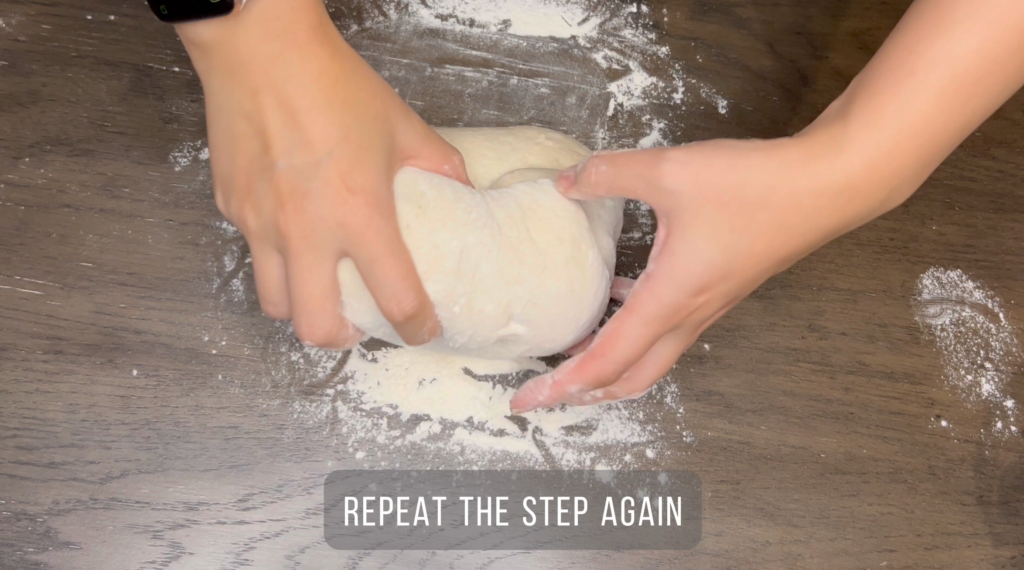

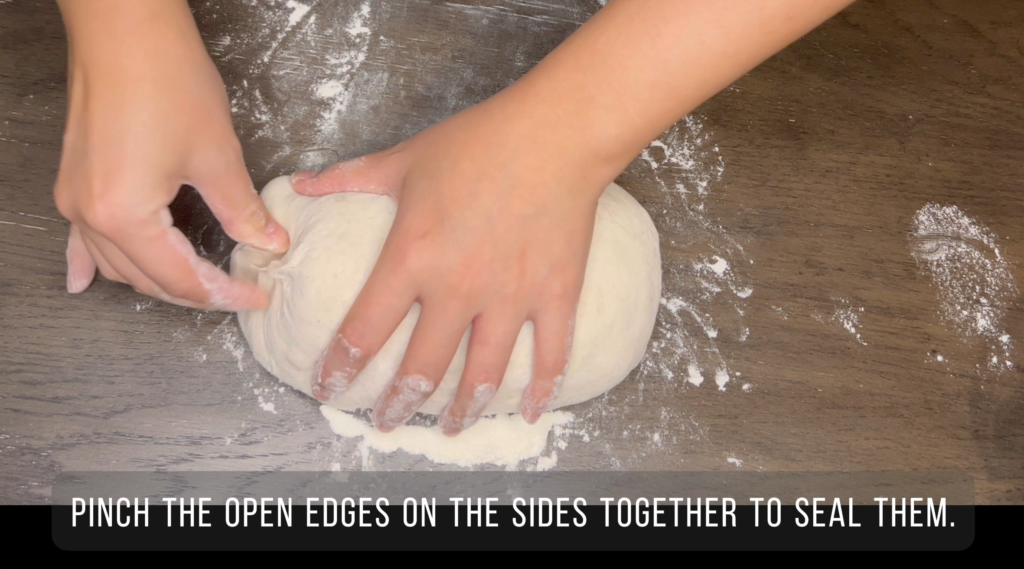
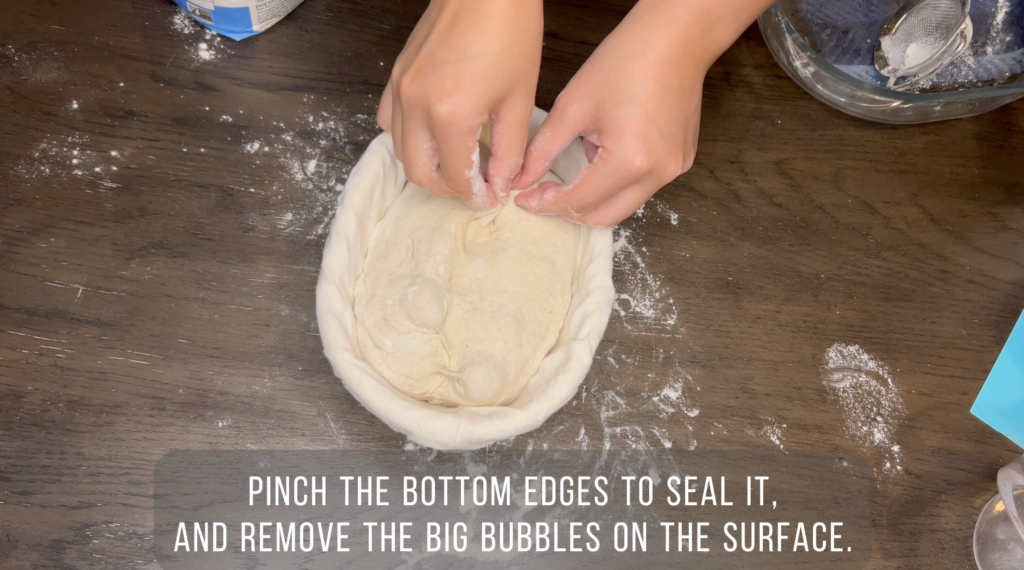
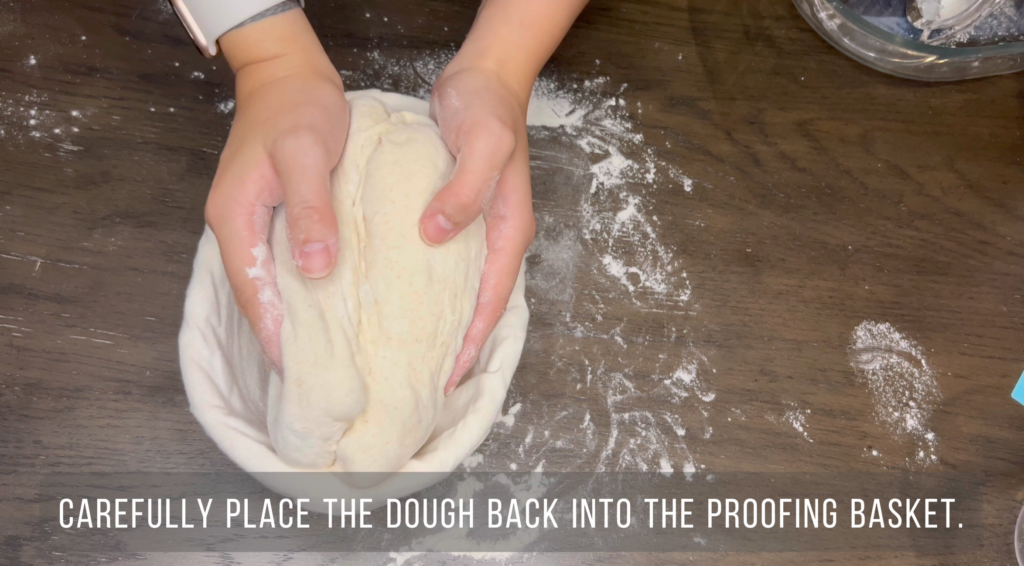
Baking
Preheat the oven to 230°C (445°F) with a setup for towel steaming:
Scoring The Dough
Invert the proofing basket onto a baking tray or a pizza peel dusted with flour. Sprinkle some flour over the dough’s surface and spread it evenly with your hands.Use a blade to make a cut down the center of the dough at a 45-degree angle, about half an inch deep. If the first cut is too shallow, you can make an additional cut to deepen it. You can also score the sides of the dough
with wheat-like patterns for decoration.
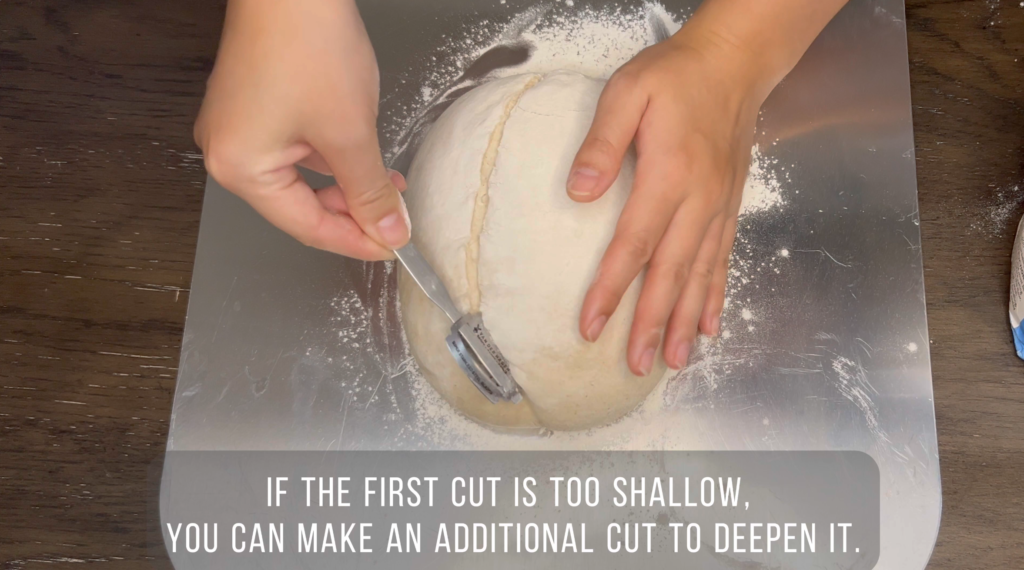
Set Up the Towel Steaming
Using an oven-safe bowl with a rolled-up towel
and filling it with 2/3 hot water, place this in the oven to preheat along with it.
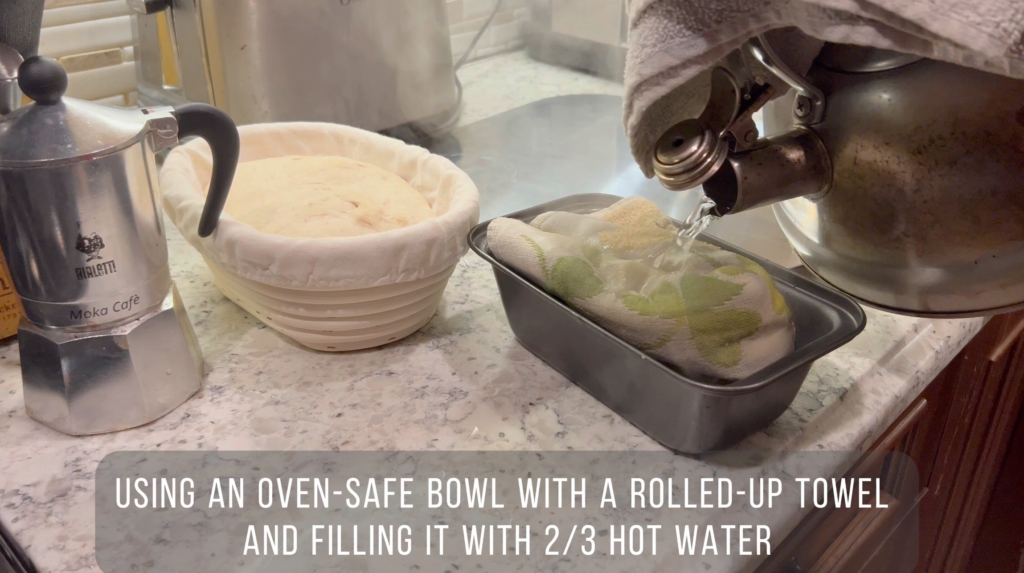
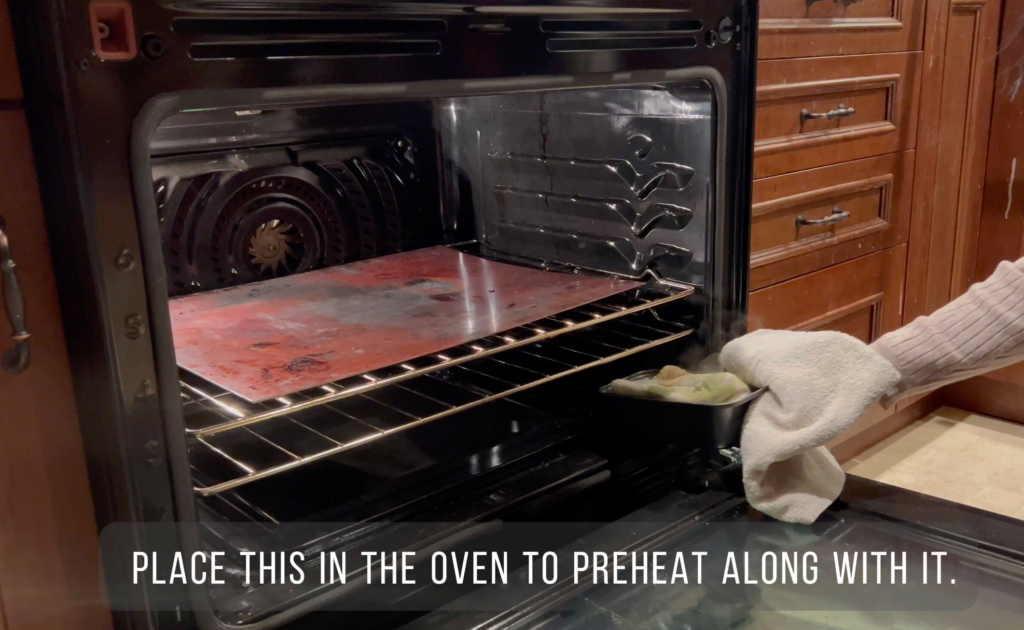
Baking
Place the bread into the oven. You can use a baking steel as the base or place the dough directly on a baking tray. Then, position it on the oven rack. Pour half a cup of water onto the bottom of the oven to create steam, then quickly close the door.
Bake for 22 minutes until the bread has risen and set. Remove the towel to stop the steam, then continue baking until the crust reaches your preferred color, about 15 minutes.
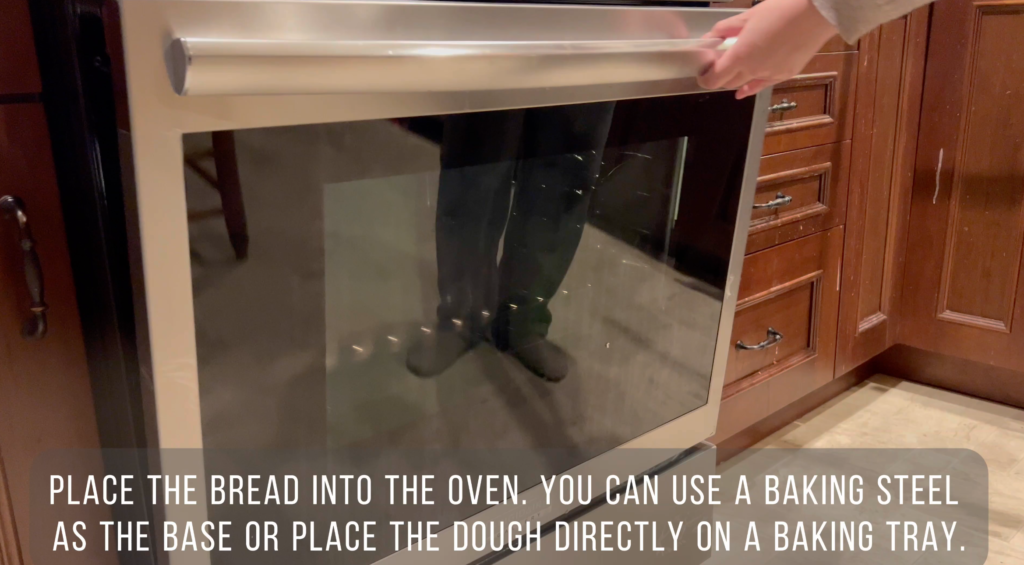
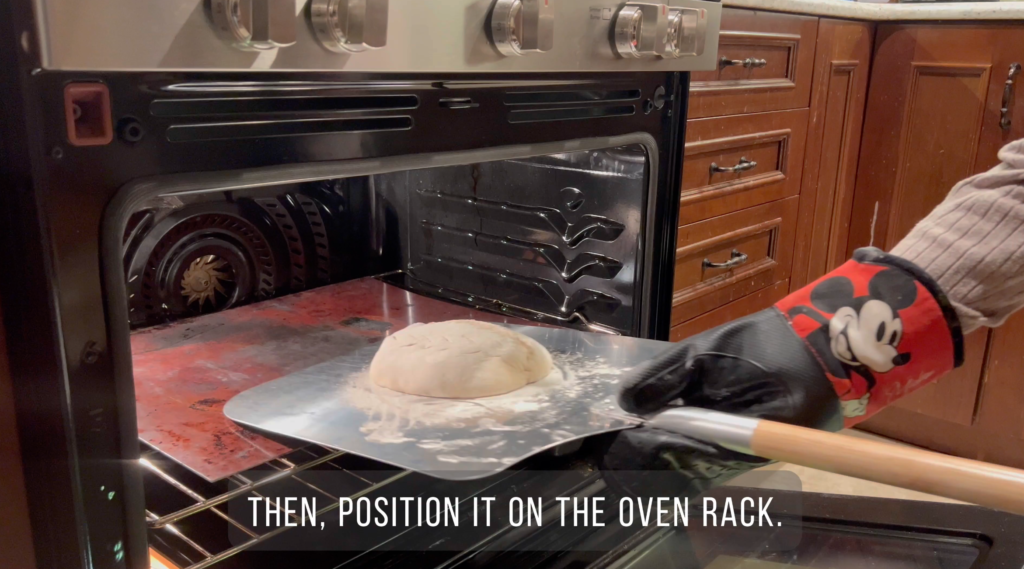
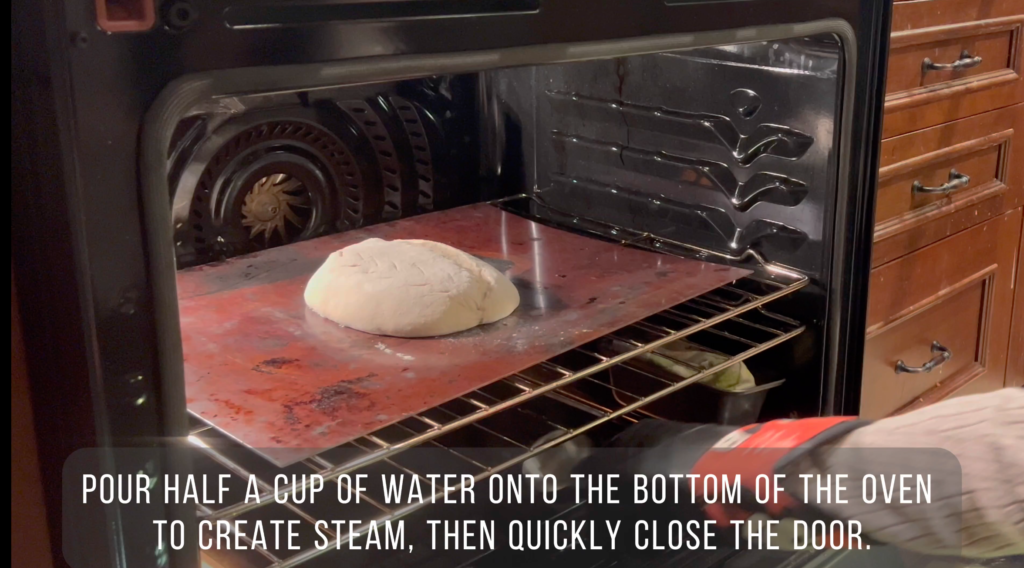

Making a great sourdough bread depends on many factors, including fermentation temperature, the activity of your sourdough starter, and proper folding and shaping techniques. However, I firmly believe that ensuring the right fermentation temperature and proper fermentation process are the most critical foundations for success. Practice often, identify areas for improvement, and adjust gradually. With time and dedication, you’ll undoubtedly bake the perfect loaf of sourdough bread.
Have questions? Drop them in the comments! I’ll be happy to help you along the way.
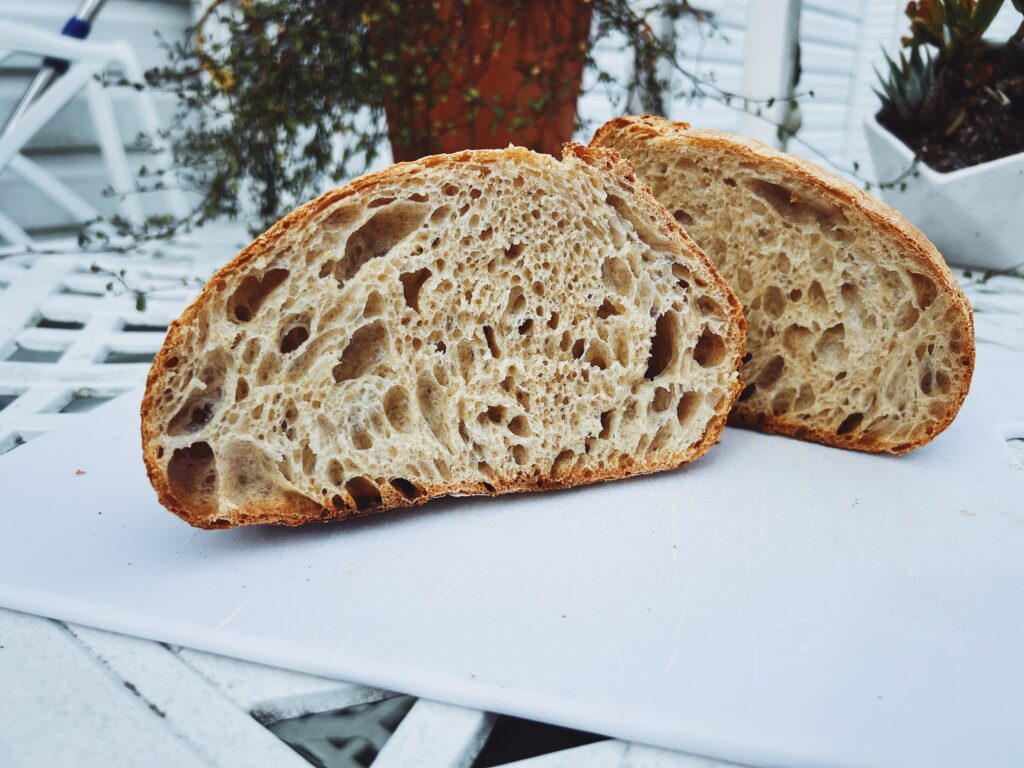




Leave a Reply